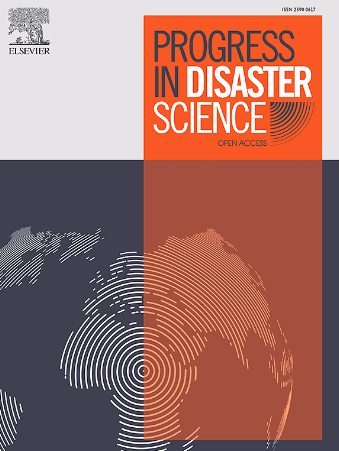Assessing preference heterogeneity for nature-based flood control measures: An econometric analysis using a choice experiment
IF 3.8
Q3 ENVIRONMENTAL SCIENCES
引用次数: 0
Abstract
In recent years, green infrastructure has gained attention due to the increasing risk of disasters caused by extreme weather and growing concern for environmental conservation. A key feature of green infrastructure is its multifunctionality. To accurately assess its benefits, it is necessary to evaluate the full range of its functions. This study employed a choice experiment to estimate the value of various aspects of nature-based flood control measures in the Lake Inba basin in Japan. The results, derived using a random parameter logit model, revealed that (1) certain flood countermeasures were highly preferred, (2) respondents' willingness to pay (WTP) for a 1 % reduction in the annual probability of flood damage was 771 JPY, (3) marginal utility diminished as the reduction in flood damages within local communities increased, and (4) environmental benefits of green infrastructure were significant. Additionally, results from the latent class model identified two respondent groups with distinct preferences. The group that was more concerned about flooding was more proactive in supporting countermeasures and had higher WTP for each function that nature-based countermeasures provide than the other group. These indicate that green infrastructure not only provides critical flood control benefits but also offers significant environmental and recreational advantages.
评估基于自然的防洪措施的偏好异质性:使用选择实验的计量经济学分析
近年来,由于极端天气造成的灾害风险日益增加,人们对环境保护的关注日益增加,绿色基础设施受到了人们的关注。绿色基础设施的一个关键特征是其多功能性。为了准确评估其效益,有必要对其功能进行全面评估。本研究采用选择实验的方法,对日本银羽湖流域自然防洪措施的各方面价值进行了评估。使用随机参数logit模型得出的结果显示:(1)某些防洪对策是高度优选的;(2)受访者愿意为每年减少1%的洪涝灾害概率支付(WTP)为771日元;(3)边际效用随着当地社区内洪涝灾害减少的增加而减少;(4)绿色基础设施的环境效益显著。此外,潜在类别模型的结果确定了两个具有不同偏好的被调查者群体。更关心洪水的小组在支持对策方面更积极主动,并且基于自然的对策提供的每个功能的WTP都比另一组高。这些表明,绿色基础设施不仅提供了关键的防洪效益,而且还提供了显著的环境和娱乐优势。
本文章由计算机程序翻译,如有差异,请以英文原文为准。
求助全文
约1分钟内获得全文
求助全文
来源期刊

Progress in Disaster Science
Social Sciences-Safety Research
CiteScore
14.60
自引率
3.20%
发文量
51
审稿时长
12 weeks
期刊介绍:
Progress in Disaster Science is a Gold Open Access journal focusing on integrating research and policy in disaster research, and publishes original research papers and invited viewpoint articles on disaster risk reduction; response; emergency management and recovery.
A key part of the Journal's Publication output will see key experts invited to assess and comment on the current trends in disaster research, as well as highlight key papers.
 求助内容:
求助内容: 应助结果提醒方式:
应助结果提醒方式:


